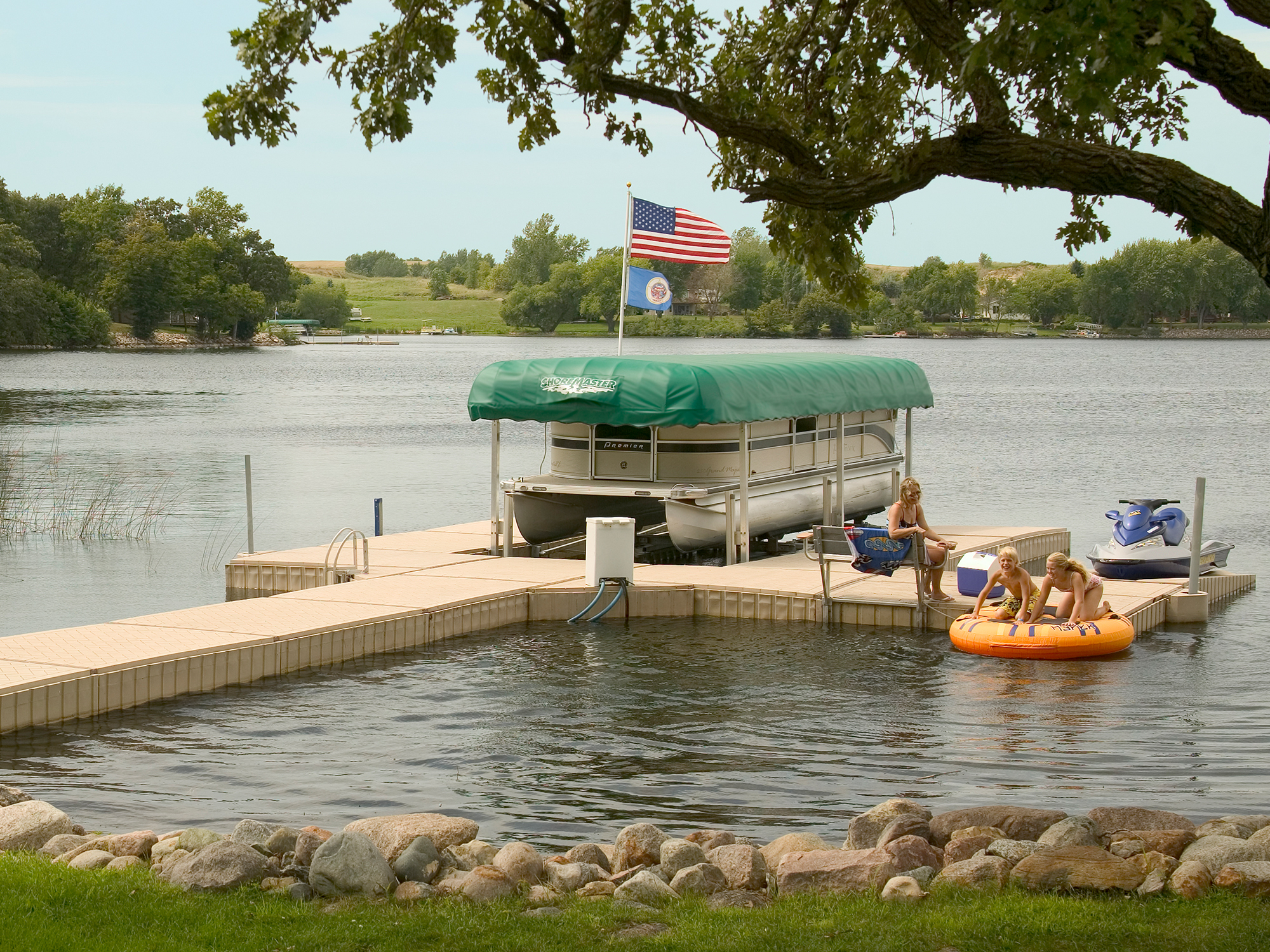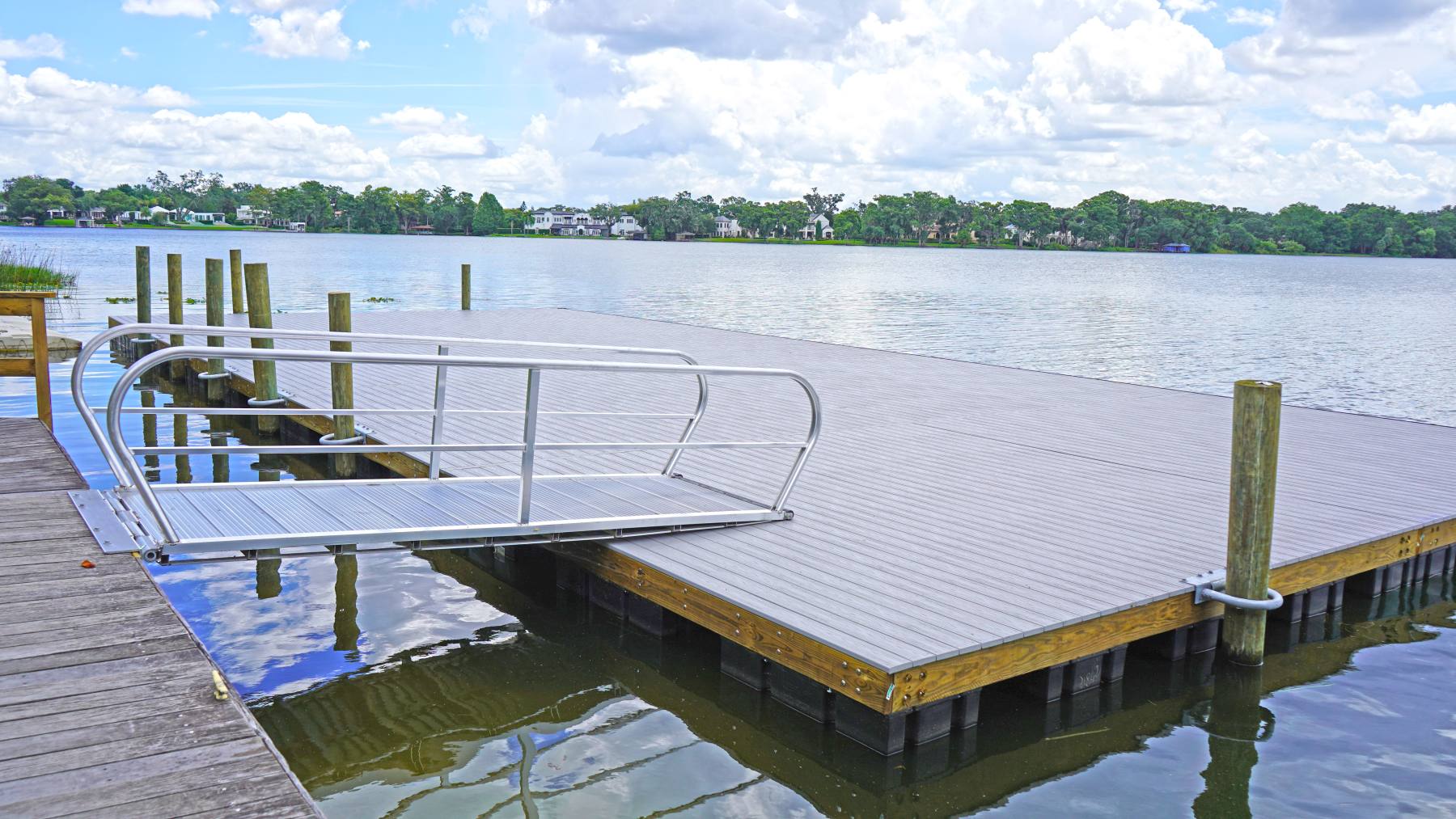Develop the Perfect Docking Remedy With Floating Docks
Floating docks existing a versatile remedy for a variety of maritime demands, adapting effortlessly to varying water degrees and diverse vessel kinds. Their modular nature enables rapid installment and moving, yet the selection of ideal products and layout attributes is crucial for guaranteeing both performance and aesthetic appeal. As we check out the crucial components that add to the performance of floating docks, several crucial aspects regarding stability and maintenance will arise, elevating concerns regarding how to maximize your docking experience. The subsequent conversation will certainly illuminate these crucial factors to consider.

Benefits of Floating Docks
Floating docks deal countless advantages that make them a perfect choice for different maritime applications. Unlike taken care of docks, floating docks rise and fall with the trend, guaranteeing constant availability for vessels.
Additionally, floating docks are normally much easier and quicker to set up contrasted to standard fixed structures. Their modular layout permits straightforward assembly and disassembly, assisting in maintenance and moving when necessary. This flexibility is specifically useful for temporary applications or in atmospheres where problems might transform.
Floating docks additionally have a tendency to be a lot more environmentally pleasant, as they lessen interruption to the seabed and bordering water communities. Their resilient nature lowers the threat of damage to aquatic life, promoting a healthier setting. These docks can be customized to fit various vessel sizes, guaranteeing that they fulfill certain functional requirements.
Inevitably, the combination of versatility, ease of installation, and ecological considerations makes floating docks a highly reliable solution for a variety of maritime demands.
Choosing the Right Materials
Choosing the ideal materials for floating docks is vital to make sure durability, longevity, and security. The choice of materials directly affects the dock's efficiency in numerous environmental problems, including exposure to water, sunshine, and potential wear from aquatic web traffic.
Typical materials utilized for floating docks include light weight aluminum, wood, and high-density polyethylene (HDPE) Light weight aluminum is light-weight, corrosion-resistant, and requires minimal upkeep, making it a superb option for durability. However, its initial price can be greater compared to other materials.
Wood, while aesthetically attractive and giving a typical look, can be at risk to rot and bug damage if not effectively treated. Making use of pressure-treated timber or naturally long lasting types like cedar or redwood can reduce these problems.
HDPE is a popular option because of its resistance to UV rays and chemicals, along with being eco pleasant. floating dock services. It is light-weight and readily available in numerous colors, enabling personalization
Eventually, the best product option will certainly depend upon specific demands, consisting of spending plan, desired aesthetics, and ecological factors to consider. Careful examination of these factors will certainly result in a effective and resilient floating dock remedy.
Style Considerations for Stability
When making floating docks, making sure stability is an essential facet that can considerably impact their performance and security. Security in floating dock design is influenced by different aspects, consisting of buoyancy, weight circulation, and the plan of parts. An optimal buoyancy system should use materials that provide sufficient lift while lessening weight. This balance guarantees that the dock stays above water, even under varying tons.
Weight distribution is essential; uniformly distributing lots throughout the dock prevents tilting and boosts security. Larger layouts can supply boosted stability, particularly in rough water conditions, while longer docks might call for additional assistances to prevent drooping.
Another vital factor to consider is the environmental impact, consisting of wave action and wind. Including attributes such as sidewalls or skirting can assist reduce the effects of ecological pressures, keeping stability in adverse problems. Ultimately, a mix of thoughtful style, product choice, and understanding of ecological variables will certainly yield a drifting dock that meets both security and security requirements.
Setup Tips and Techniques

Next, secure the required authorizations and abide by neighborhood policies, which might dictate installment methods and environmental considerations. Engage a certified service provider experienced in floating dock installations if called for. Use high-quality products created for aquatic environments to boost longevity and long life.
When positioning the dock, align it identical to the shoreline to facilitate very easy accessibility. Make sure that the anchoring system is robust, utilizing concrete reference blocks or helical supports to support the dock against wind and wave activity. It's essential to account for seasonal water degree changes, including potential ice motion in chillier climates.
Throughout the installment, confirm the dock's floatation and security before settling the anchoring. Frequently check the installation for any kind of indicators of wear or damage. By complying with these pointers and methods, you can attain a safe and secure, useful, and cosmetically pleasing floating dock setup that satisfies your needs.
Upkeep and Treatment Guidelines
Caring and maintaining for floating docks is vital to prolonging their life expectancy and making certain safe usage. Normal evaluations must be performed to recognize any type of indicators of wear, damages, or aquatic development. Search for cracks, loose fittings, or tarnished locations on the dock's surface, as these problems can jeopardize architectural honesty.
Cleaning is necessary. Utilize a stress washing machine to remove algae, barnacles, and particles, which can gather in time. For persistent development, consider eco-friendly cleaner that won't harm water life.
In addition, inspect the mooring lines and supports frequently to ensure they are cost-free and secure from corrosion. Replace any kind of torn or harmed lines quickly to preserve stability.
Throughout severe climate, such as storms or freezing problems, take preventive steps. Secure the dock with extra mooring lines and, if possible, eliminate any type of detachable parts to stop damages.
Conclusion
Finally, the implementation of floating docks presents a reliable and flexible docking service appropriate for different maritime applications. Their adaptability to varying water degrees, combined with a modular style, permits easy personalization and relocation. Choosing suitable products improves both longevity and aesthetic allure, while cautious consideration of stability ensures security and long life. With proper installment and regular maintenance, floating docks can supply effective and trusted docking experiences for a vast array of vessels.
As we discover the vital components that contribute to the efficiency of floating docks, numerous crucial elements regarding security and maintenance will emerge, raising questions concerning exactly how to maximize your docking experience. Unlike dealt with docks, floating docks rise and autumn with the tide, ensuring constant accessibility for find out here vessels.When making floating my explanation docks, making sure security is an essential facet that can substantially influence their performance and security. Stability in floating dock design is influenced by numerous variables, including buoyancy, weight distribution, and the plan of parts. Ultimately, a combination of thoughtful design, material option, and understanding of ecological aspects will certainly yield a floating dock that fulfills both stability and safety and security needs.